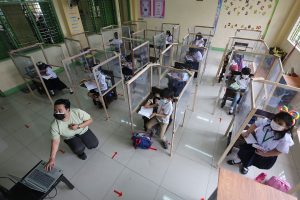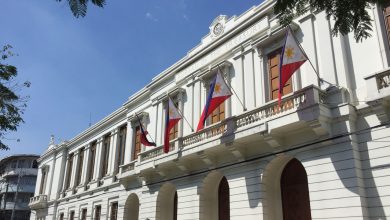ADB finds learning crisis worse for females, poor in Asia-Pacific

THE Asian Development Bank (ADB) said school closures during the pandemic worsened student progression and future livelihoods, particularly for poor students and girls, in the Asia-Pacific region.
“School closures are winding down after over two years but their damage could be long lasting. Closures worsened a learning crisis that existed before the pandemic. In 2019, 57% of children in middle- and low-income countries couldn’t read a simple text by age 10, and the World Bank projects that number has since jumped to 70%,” said Milan Thomas, an economist from the ADB.
Basically, “students learned less than they would have had schools stayed physically open,” he added during an ADB webinar on Thursday. “The measured losses in learning are several months’ worth of schooling, even in the most advanced economies.”
The ADB said that projected losses are 28% higher for girls than for boys and 47% higher for the poorest students compared to the richest students.
“Poor students and girls were especially hard hit by school closures, and that’s because those two groups had less access to remote instruction during the pandemic, as well as a greater tendency to be pulled out of school in response to economic hardship,” Mr. Thomas said.
He also said that there were over 250 million out of school youth before the pandemic, a problem which was further exacerbated by the crisis.
“There are no official estimates of the current number but we know that number has increased, and unfortunately substantially so in some countries,” Mr. Thomas said.
“In developing Asia, the projected losses are equivalent to about half a year of learning-adjusted schooling, and this foregone learning will hurt student’s ability to earn income as adults,” he added.
The lost lifetime earnings of these students were conservatively projected at $3.2 trillion or 13% of developing Asia’s gross domestic product in 2020.
The Philippines was among the last countries to reopen schools physically after a global coronavirus pandemic was declared in 2020.
Estimates by the National Economic and Development Authority indicate that a year of school closures cost about P10.8 trillion in productivity and wage losses over the next 40 years.
Nonetheless, the ADB’s impact evaluations have shown “that interventions have been able to mitigate learning losses in some developing country contexts.”
For a recovery strategy, ADB proposed periodic student assessments and continuous teacher training.
“A key first step after schools safely reopen is to test students to determine how much knowledge was lost or forgone and at what level to restart instruction, after which attention should focus on regularly tracking the progress of learning,” according to an accompanying ADB report.
More concrete measures involve consolidating the curriculum, extending instruction time, and targeting instruction to customized smaller groups within a classroom.
“Teaching based on the student’s level, with the help of teaching assistants, tutors, or education technology (edtech), is crucial for learning recovery, as it has proven effective in improving learning outcomes,” the ADB report added.
However, this is an uphill battle as only 25% of countries surveyed by the United Nations Children’s Fund had a solid learning recovery plan.
“That lack of planning will make it harder to close the gap for developing countries,” Mr. Thomas said.
Recently, President Ferdinand R. Marcos, Jr. ordered the Department of Education to allow blended learning in some areas of the country, rejecting the agency’s plan to return to full face-to-face classes starting November. — Diego Gabriel C. Robles




